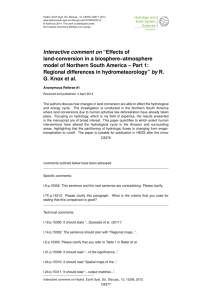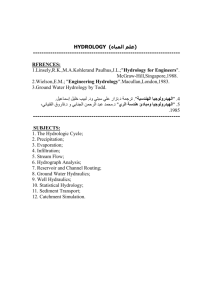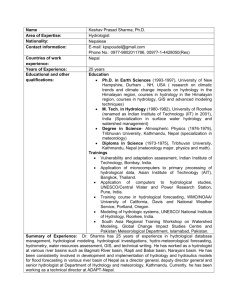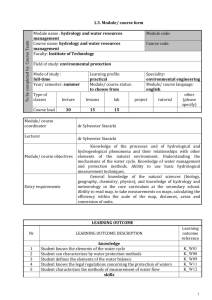EHS 1209HYDROLOGY AND HYDRAULICS
advertisement
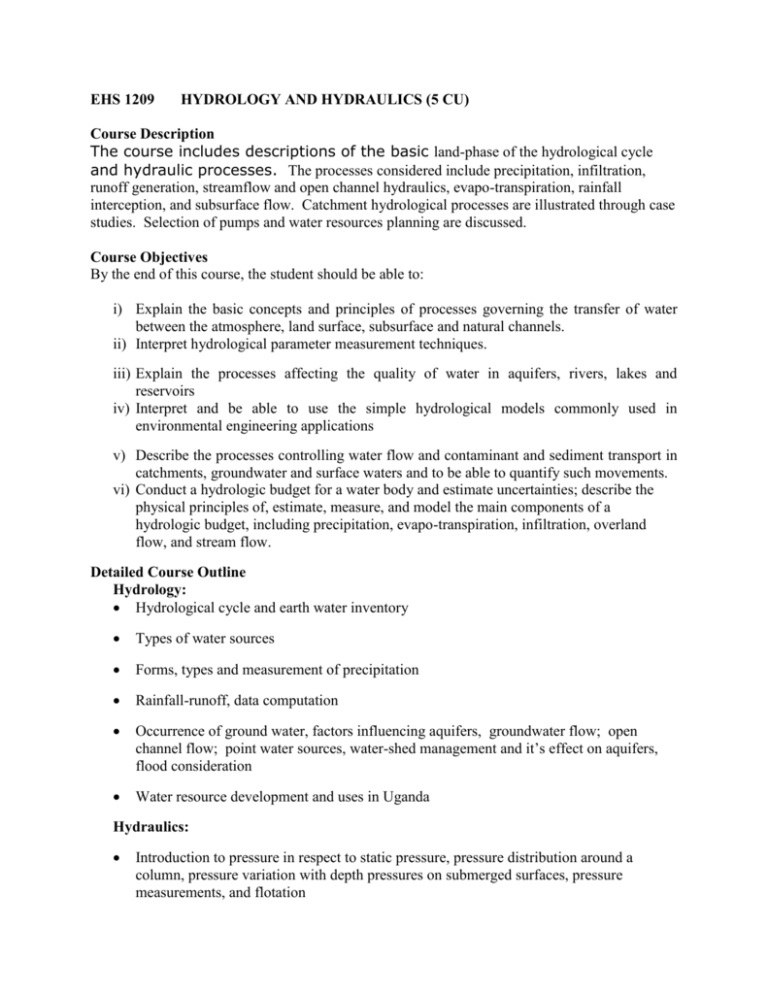
EHS 1209 HYDROLOGY AND HYDRAULICS (5 CU) Course Description The course includes descriptions of the basic land-phase of the hydrological cycle and hydraulic processes. The processes considered include precipitation, infiltration, runoff generation, streamflow and open channel hydraulics, evapo-transpiration, rainfall interception, and subsurface flow. Catchment hydrological processes are illustrated through case studies. Selection of pumps and water resources planning are discussed. Course Objectives By the end of this course, the student should be able to: i) Explain the basic concepts and principles of processes governing the transfer of water between the atmosphere, land surface, subsurface and natural channels. ii) Interpret hydrological parameter measurement techniques. iii) Explain the processes affecting the quality of water in aquifers, rivers, lakes and reservoirs iv) Interpret and be able to use the simple hydrological models commonly used in environmental engineering applications v) Describe the processes controlling water flow and contaminant and sediment transport in catchments, groundwater and surface waters and to be able to quantify such movements. vi) Conduct a hydrologic budget for a water body and estimate uncertainties; describe the physical principles of, estimate, measure, and model the main components of a hydrologic budget, including precipitation, evapo-transpiration, infiltration, overland flow, and stream flow. Detailed Course Outline Hydrology: Hydrological cycle and earth water inventory Types of water sources Forms, types and measurement of precipitation Rainfall-runoff, data computation Occurrence of ground water, factors influencing aquifers, groundwater flow; open channel flow; point water sources, water-shed management and it’s effect on aquifers, flood consideration Water resource development and uses in Uganda Hydraulics: Introduction to pressure in respect to static pressure, pressure distribution around a column, pressure variation with depth pressures on submerged surfaces, pressure measurements, and flotation Principles of fluid flow: Continuity of flow, momentum of fluids, energy of fluid, Bernoulli’s equation for frictionless flow, loss of energy Flow measurements. Venturi - meter and piston tube, small and large orifices, not dices and weirs Open Channel Flow: Flow classification, steady uniform flow, steady non uniform flow, natural and artificial channels and their properties Flow under varying head: Tank emptying through orifice or pipe, time to fill the tank, inflow and outflow, sudden opening of a valve, reservoir emptying over weir Practical and field work Mode of delivery: Lectures, tutorials/seminars and practical/field work Mode of Assessment - Continuous assessment - End of semester exam: MCQ’s, short answer and long assay questions 40%. 60%. Suggested Reading List 1. Lecture handouts and additional materials on reserve at the MUSPH Resource Centre. 2. Twort A. C., Law F. M. and Crowley F. W and D. D. Ratnayaka Water Supply (1993) 4th Edition, Arnold Publishers 3. Morgan Peter. Rural Water Supplies and Sanitation, A text from Zimbabwe’s Blair Research Laboratory (1994), Macmillan Publishers 4. Chow, V T, Maidment, D R and Mays, L W (1988) Applied Hydrology, McGraw-Hill. 5. Shaw, E M, Hydrology in Practice, Van Nostrand Rheinhold (International). 6. Chadwick, A and Morfett, J (1993) Hydraulics in Civil and Environmental Engineering, 2nd Ed., Chapman and Hall 7. Chow, V.T. ed. 1998. Applied Hydrology. New York. McGraw-Hill. 8. Maidment, D.R. ed. 1992. Handbook of Hydrology. New York, McGraw-Hill.
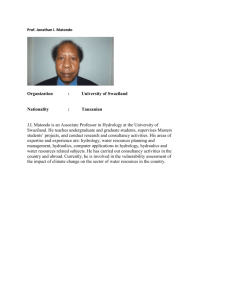
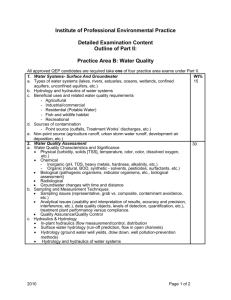
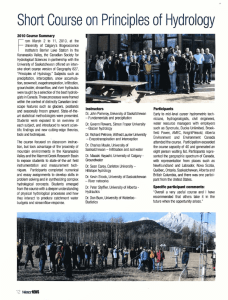


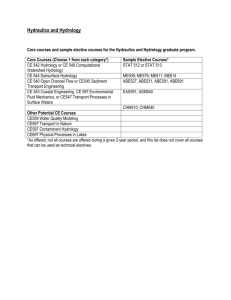
![Job description [DOC 33.50 KB]](http://s3.studylib.net/store/data/007278717_1-f5bcb99f9911acc3aaa12b5630c16859-300x300.png)

